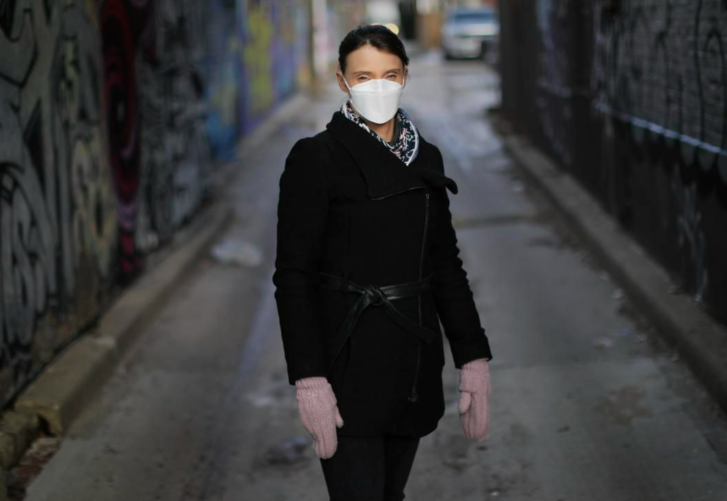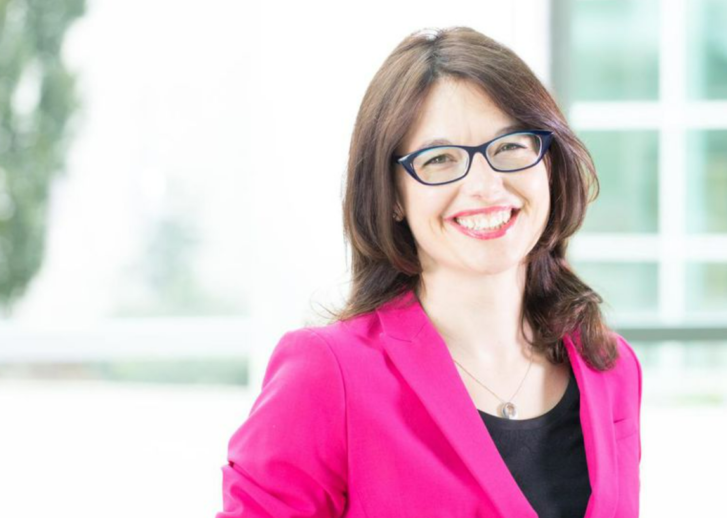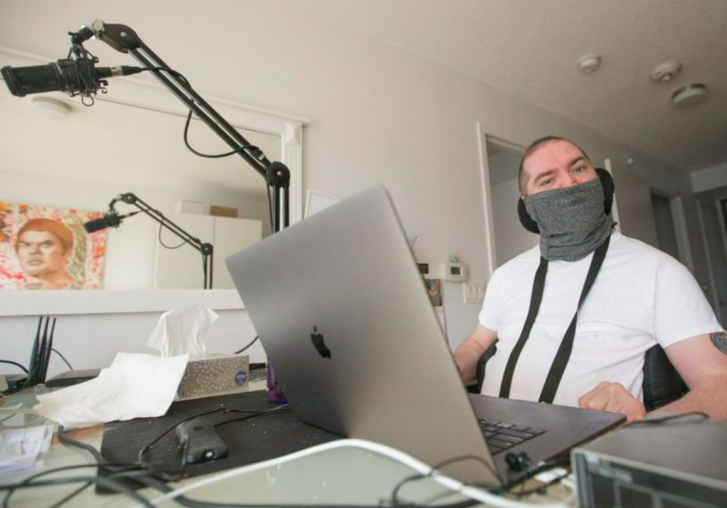As Ontario lifts pandemic restrictions, immunocompromised and other vulnerable people feel left out of the party.
Speaking about his government’s decision to lift various public health restrictions ahead of schedule, Premier Doug Ford expressed a popular sentiment about COVID-19 as the pandemic’s second anniversary nears.
“Everyone’s done with this,” he said on Feb. 15. “Like, we are done with it … Thank God, on March 1 we’re moving out of this, and I just can’t wait.”
Not everyone shares the premier’s enthusiasm, however.
Katie Babcock wishes she could be “done” with COVID and all the disruption it has caused her life, but the 42-year-old marketing and communications professional knows that immunocompromised people like her can’t simply wish their risk away. “I don’t have the privilege not to live in fear,” she said.

Babcock’s life will actually become more constrained on March 1, when the province eliminates proof-of-vaccination requirements and capacity limits, because she will be deepening her isolation in order to protect herself. If masking is no longer required indoors, her world will shrink even further.
The public health measures some see as restrictive and inconvenient, she considers potentially life-saving.
Babcock, who has a primary immune deficiency called hypogammaglobulinemia, has had four doses of a COVID-19 vaccine, but her doctor said she should act as if she is unvaccinated. Her body doesn’t make enough antibodies and, even with two booster shots, she may not have a sufficient immune response.
So when Ford says we need to “learn to live with (COVID) and get on with our lives,” Babcock said he’s not thinking about people like her. “That means everybody else, and they’re basically fine if people like me die from it.”
While Ontario moves forward in its latest phase of reopening and also considers eliminating mask mandates, many of society’s most vulnerable people — the immunocompromised, those with disabilities, older adults and those caring for children under five — are feeling left behind. They have watched the all-in-this-together spirit of the pandemic’s early days become replaced by an everyone-for-themselves ethos.
“It feels like people don’t see my life as worthy of protecting,” Babcock said.
The number of people that make up these vulnerable groups is not insignificant. A Statistics Canada survey in 2020 found that 14 per cent of Canadians had a compromised immune system, while an estimated one in five people have a disability. Nearly five per cent of Ontario’s population is under five years old, and there are almost as many people over 80.
They are not all at equal risk, but they all rely to some extent on community protection against COVID-19, said Dawn Bowdish, an associate professor at McMaster University and Canada Research Chair in aging and immunity.
“Without our help, they can’t protect themselves,” she said. “I think part of our civic duty is to care for the people around us, and I think infectious disease prevention is one of our civic duties for living in society.”

Bowdish has noticed an increasing lack of empathy for vulnerable people as the pandemic has gone on, and she has been frustrated by recent suggestions by Ford and others in positions of authority that learning to live with COVID means simply going back to the way things were before the pandemic.
“Learning to live with a virus doesn’t mean having no public health measures,” she said. “It’s not throwing up our hands and going back to our old life. It’s adapting our life to live with a new infectious disease.”
That could include vaccine mandates for certain jobs, strict ventilation requirements and continued masking in some settings, she said, adding that protecting the most vulnerable should be the goal.

Andrew Gurza, a disability awareness consultant who has cerebral palsy, said Ford’s comments made him angry “because disabled and immunocompromised people in Ontario and around the world know that we’re not done with COVID.”
He said the comments showed a lack of appreciation for the fact vulnerable people have sacrificed more than most during the pandemic and now will be put at greater risk.
“We’ve been self-isolating harder than anybody,” Gurza said, citing as one example how his attendant care has been reduced at various points in the pandemic.
“I’ve had to go 11 to 12 days without showering because of outbreaks,” he said. “We’ve done so many things to keep ourselves safe that have really diminished our care, and I think him saying we’re ‘done with this’ is just super ableist and doesn’t really look at the reality of this virus.”
Anna Banerji, a pediatrician and professor at the University of Toronto’s Dalla Lana School of Public Health, said she would have preferred the province lifted restrictions more gradually.
“The fact is people are still getting COVID and people are still getting very sick with it.”
Anyone who is unvaccinated or has received fewer than three doses of a COVID-19 vaccine is at heightened risk, she said, including all children under five.
Between Dec. 12 and Feb. 12, 315 children under five were hospitalized in Ontario with COVID-19, according to the latest data from Public Health Ontario. Fifteen of those children were admitted to intensive care.
“Children tend to have less severe disease, but that’s not always the case,” Banerji said.
Babcock said she understands people are tired. She’s tired, too, and she doesn’t want to be locked down any more than anybody else. She would just like some public health measures kept in place so she could feel moderately safer in public places.
“It’s not lockdowns or no protections at all,” she said. “It would just be great if I could go grocery shopping and people continued to wear masks for, like, a few more months until things calm down in the community.
“I guess people have just reached a limit and they, frankly, have stopped caring about a lot of other people.”
Article From: The Star
Author: Brendan Kennedy

